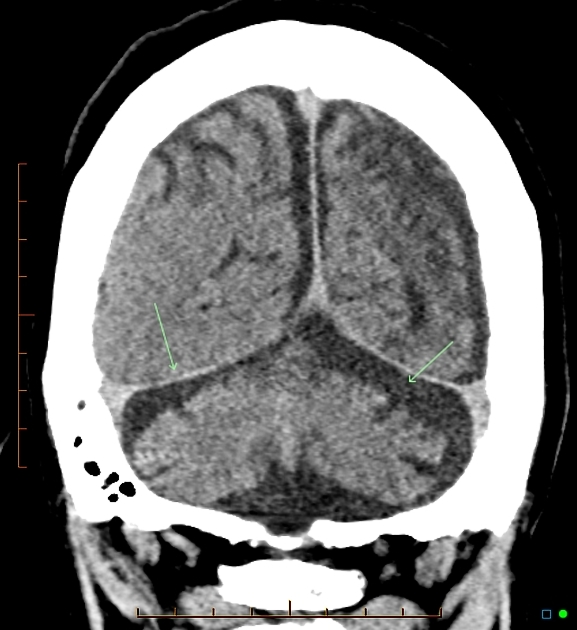Phenytoin cerebellar atrophy occurs after prolonged exposure to phenytoin, usually for the management of epilepsy.
On this page:
Epidemiology
The most important factor in the development of cerebellar atrophy is the duration of phenytoin exposure 2. Approximately 30% of individuals with long-term phenytoin exposure will develop cerebellar atrophy 2.
Clinical presentation
Acute phenytoin toxicity can result in transient cerebellar dysfunction, but it is chronic exposure to therapeutic levels of phenytoin which results in permanent pancerebellar dysfunction, including ataxia, nystagmus, dysarthria, and hypotonia 2.
Pathology
Histological assessment demonstrates loss of Purkinje cells throughout the cerebellum, as well as less marked loss of internal granular layer cells 1.
Radiographic features
CT and MRI are able to demonstrate generalized cerebellar volume loss. A clue to the diagnosis is the commonly associated calvarial thickening also due to long-term phenytoin exposure.
Differential diagnosis
This differential is essentially that of other causes of diffuse cerebellar atrophy.





 Unable to process the form. Check for errors and try again.
Unable to process the form. Check for errors and try again.